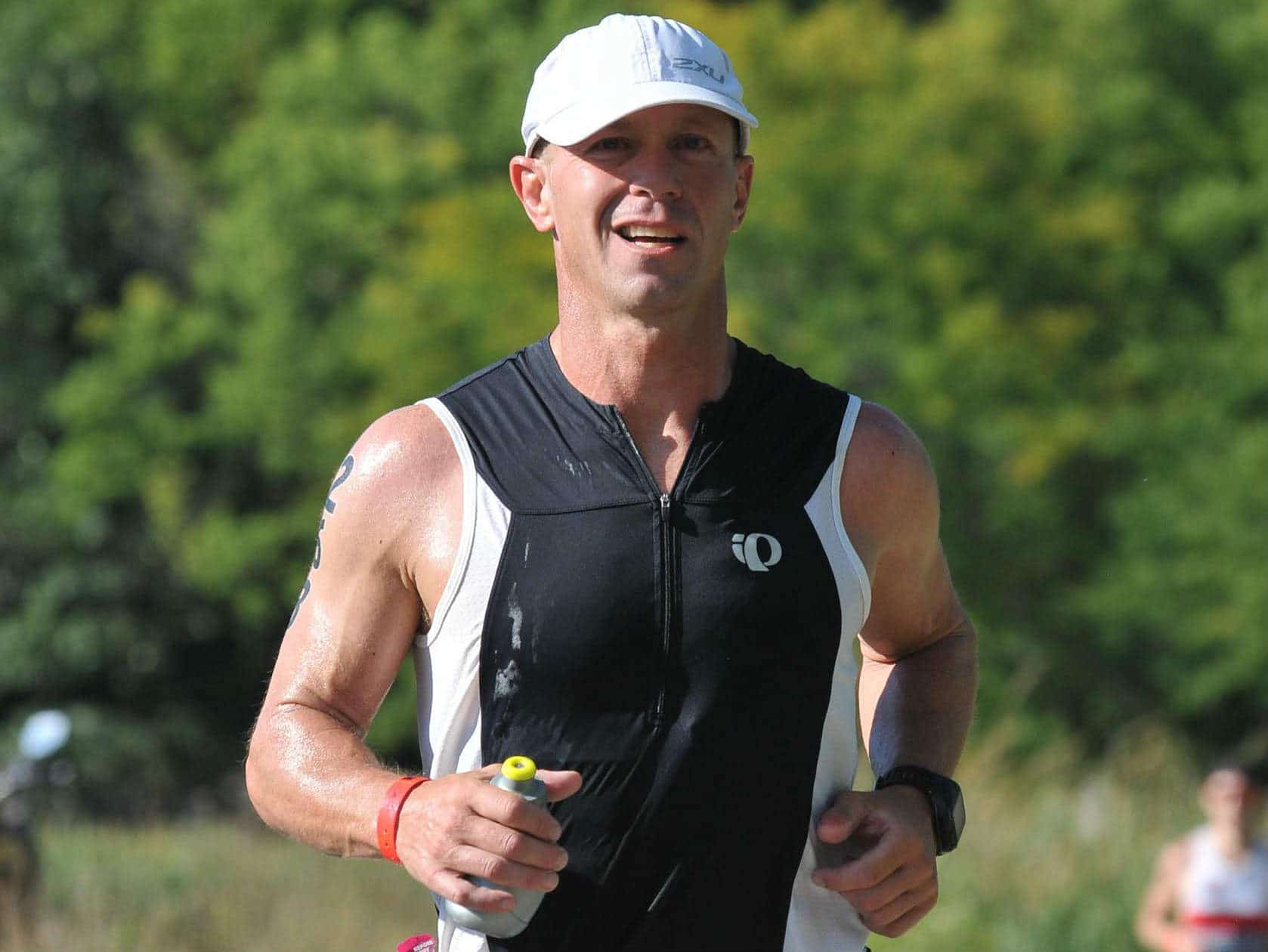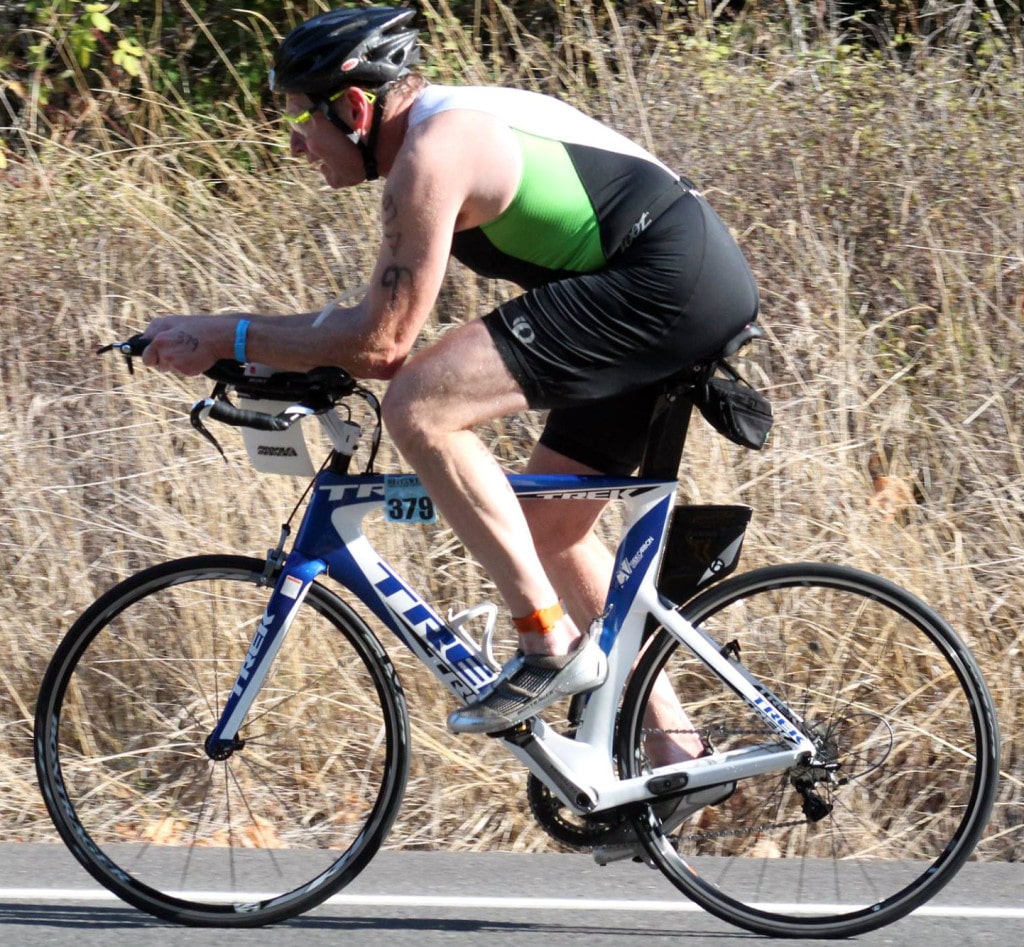Why Senior Triathletes Should Use Interval Training

Interval training for senior triathletes provides important health and fitness benefits through short, intense periods of exercise. It is not surprising that, in recent years, high intensity interval training, or HIIT, has been among the most researched type of fitness program.
The interest in HIIT comes in part because of its value for the growing population of seniors. For the older athlete, HIIT can be an important part of a training plan. Why? Because it reduces the wear and tear of continuous, low to medium intensity exercise used to help us stay competitive as we age.
What is HIIT?
According to the American College of Sports Medicine (ACSM), high-intensity intervals are defined as those exercises performed at 80 to 95 per cent of one’s maximum heart rate. Intervals are between five seconds and eight minutes long.
The periods of high intensity are followed by periods of complete rest or active recovery performed at 40 to 50 per cent of one’s maximum heart rate. These periods depend on a person’s fitness but are generally longer than the high intensity period. As you will read further on, recovery is a critical part of an effective HIIT protocol.
Since there are so many ways to apply the principles of HIIT, this technique is used by elite and amateur athletes. It is even used as part of cardiac rehabilitation.
HIIT exercises can be performed in the gym using stationary bikes and treadmills, in the pool or lake, and at home using only bodyweight.
You May Already Be Using HIIT
If you have taken a cycling class at your local fitness center, you have probably made use of HIIT. Tabata, one of the most well known methods of applying HIIT, consists of eight repetitions of 20 seconds pedaling at 170% of maximum sustainable oxygen uptake followed by 10 seconds of rest. Done properly, the cyclist will maintain the same level of power for each repetition, rather than have the power taper off with each successive interval or even vary between intervals.
Other examples of high intensity interval training for the swim and run legs of a sprint triathlon are:
- 10 repeats of 100 yds (or meters) at 80% effort with 10-20 seconds rest between each interval. (Source: The Complete Guide to Triathlon Swimming and Training by Kevin Koskella.)
- 8 x 400 m at race pace with a 400 m recovery slow jog or walk between intervals. (Source: Run Less, Run Faster by Bill Pierce, Scott Murr, and Ray Moss.)

Benefits of High Intensity Intervals
High intensity interval training has three main benefits:
- Reduces the tendency for overuse injuries,
- Minimizes boredom – and the tendency to skip workouts – from repeating the same routine day after day,
- Increases performance, that is, helps us become faster.
While longer, moderate intensity workouts build our body’s aerobic system, high intensity intervals tap into and strengthen both the aerobic and anaerobic systems.
In a May 22, 2019 article in Science Focus magazine titled “HIIT is changing the way we work out, here’s the science why it works“, author Jamie Millar explains the changes occurring during and as a result of high intensity intervals:
“Ramping up the intensity forces your body to tap into its anaerobic system for energy, because it can’t supply the oxygen required to work aerobically quickly enough; in the recovery intervals, your body reverts to its aerobic system. As the session goes on, your body relies less on the anaerobic system, because quick-release energy sources of phosphocreatine and glycogen (glucose stored in your muscles) become depleted. Your body will therefore start to rely more on the aerobic system, which releases energy more sustainably but slowly from fat.”
In Millar’s comments, we see benefits in developing our anaerobic system and in burning more fat. The latter is one reason why HIIT (along with proper nutrition) is great for weight loss.
What Senior Triathletes Should Know About Interval Training
Getting the most from HIIT and avoiding injury from it requires a well-thought out and properly executed plan. Here are three fundamentals of this type of routine.
First, Warmup
Before engaging in intense intervals, it is essential to warm up our muscles and get our heart rate up. My typical warmup is a 10 to 15 minute swim, bike, or run before the interval portion of the session.
Second, Recover Properly
Recovery in the context of HIIT (High Intensity Interval Training) has three meanings:
- Recovery between each interval of a session,
- Proper recovery at the end of HIIT session, and
- Fully recovering between sessions.
Recovery during a HIIT session – Experts remind us to honor the recovery time specified in each interval. During the so-called ‘recovery interval’, our body clears out lactic acid from our muscles. One study showed that a recovery of 3 minutes between 4 minute running intervals led to faster, more productive intervals than when shorter or self-selected recovery intervals were used.
Recovery after a HIIT session – A study by the German Federal Institute of Sport Science showed that active recovery, such as 15 minutes of moderate jogging after a HIIT session, led to a beneficial increase in anaerobic lactate threshold compared to passive recovery.
Recovery between sessions – Between HIIT sessions, it is important for our body to eliminate the lactic acid, hydrogen ions, and hormones (e.g. adrenaline) produced during the anaerobic exercise. For some types of HIIT, recovery also involves repair of micro tears of the muscles.
It is because of the time and need for complete recovery between intense sessions that most training programs include no more than one HIIT session per week.
Third, Be Patient
As with any form of physical activity that I can think of, doing too much too soon is a formula for injury. The key is to progress slowly.
For example, here is an example of a progression I have used, one that has NOT led to injury:
- Hill repeats – start with 2 x 15-20 seconds running up a hill with at least 8% grade (8 feet [meters] rise over 100 feet [meters] distance) after a 10-15 minute warm-up run. Repeat every 7 to 14 days adding two repeats each session to a maximum of 10 per session. (Source: Stryd.)
On the other hand, I have become injured twice while trying to run intervals too fast. Too fast in this case means significantly faster than my 5k race pace. In one case, I injured a hamstring. Another time, I injured muscles around both knees.
Both injuries required a week without running. I am sure that I lost more than I gained from the sessions.
Managing Risks
The idea of becoming fit for little investment in time may sound appealing. However, that should not be the takeaway from this post.
To gain the benefits and avoid possible serious injury, HIIT must be done properly. The risk of high intensity can outweigh the benefits if done improperly.
Before starting a HIIT program, proponents of HIIT unanimously agree that you should discuss your plans with your physician.
How Do You Use High Intensity Intervals in Your Training?
Comment below to let us know how you are using intervals in your training? What have been the results?
